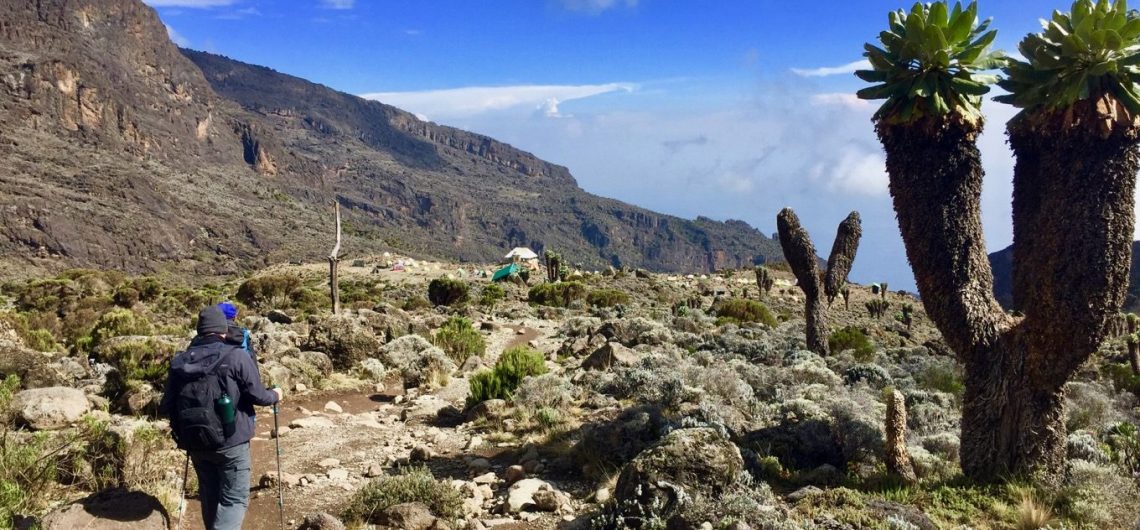If you’re looking for a challenging and exciting climb up Mount Kilimanjaro to Uhuru Peak, the Machame Route is one of the best options out there. Often called the “Whiskey Route” due to its steep and demanding climb, the Machame Route offers stunning views and an adventurous experience for those willing to take on the challenge.
Here’s everything you need to know about how to climb Machame:
1. Choosing a Tour Operator
Before embarking on any Kilimanjaro climb, it’s important to choose a reputable tour operator, like Tranquil Kilimanjaro. Look for companies that have a strong track record of safety and success, as well as positive reviews from previous clients. Ask for recommendations from friends or family members who have climbed Kilimanjaro before, and do some research online to compare different operators.
2. Preparing for the Climb
Climbing Kilimanjaro is a physically demanding undertaking, so it’s important to prepare your body and mind ahead of time. Ideally, you should start training at least six months before your climb, with a focus on building endurance, strength, and flexibility. This might include cardio exercises like running or cycling, as well as strength training and yoga.
In addition to physical preparation, you should also make sure you have all the necessary gear and equipment for the climb. This might include warm clothing, a good quality sleeping bag, a backpack, hiking boots, and a waterproof jacket, among other items.
Learn how effectively prepare and plan you climb
3. Climbing Itinerary
The Machame Route is typically a six-day to 7 days climb, although some tour operators may offer variations on this itinerary. Here’s a breakdown of what you can expect:
- Day 1: Begin your climb at the Machame Gate and hike for several hours through the dense rainforest before reaching your first campsite.
- Day 2: Continue hiking through the forest before reaching the moorlands, where you’ll encounter more open terrain and stunning views of the mountain.
- Day 3: Ascend through the moorlands and into the alpine desert, where you’ll be above the tree line and experience more challenging terrain.
- Day 4: This is typically the most challenging day of the climb, as you’ll ascend to the summit base camp and prepare for your final push to the summit.
- Day 5: Summit day! You’ll wake up early and begin hiking in the dark, reaching the peak just in time to watch the sunrise over the African plains. You’ll then descend to your final campsite for a well-deserved rest.
- Day 6: Descend to the Mweka Gate and receive your certificate of achievement before returning to Moshi or Arusha.
Click here to see the recommended 7 Days Machame Route itinerary
4. Safety Tips
While the Machame Route is a popular and well-traveled path, it’s important to remember that climbing Kilimanjaro is still a risky endeavor. Here are a few tips to keep in mind for a safe and successful climb:
- Stay hydrated: Drink plenty of water throughout your climb to avoid altitude sickness and dehydration.
- Go slowly: Climbing too quickly can increase your risk of altitude sickness, so take your time and listen to your body.
- Dress appropriately: Temperatures can vary widely on Kilimanjaro, so make sure you have warm layers and a waterproof jacket on hand.
- Listen to your guide: Your guide is there to keep you safe and help you succeed, so be sure to follow their instructions and advice.
Get to know the Machame Route
The Machame Route is a challenging but rewarding climb that offers stunning views and a true sense of adventure. With the right preparation, gear, and tour operator, you can successfully summit Kilimanjaro and achieve a once-in-a-lifetime experience. So start training, book your trek here.
Here is some more information about the Machame route for climbing Mount Kilimanjaro:
- Length: The Machame route is approximately 62 kilometers (38.5 miles) long and takes 6-7 days to complete.
- Difficulty level: The Machame route is considered to be a challenging route, with steep ascents and descents, rocky trails, and boulder fields. Climbers must have a good level of physical fitness and mental endurance to complete the climb.
- Altitude sickness: Altitude sickness is a risk for climbers on the Machame route, as the route involves a rapid ascent to high altitude. It is important to take enough time to acclimatize to the altitude to reduce the risk of altitude sickness.
- Accommodation: The Machame route has several campsites along the way, including Machame Camp, Shira Camp, Barranco Camp, Karanga Camp, and Barafu Camp. The campsites offer basic facilities such as toilets, dining tents, and sleeping tents.
- Guides and porters: It is mandatory to have a licensed guide and a team of porters to climb the Machame route. The guide will provide guidance on the climb, while the porters will carry camping gear and personal belongings.
- Best time to climb: The Machame route can be climbed year-round, but the best time to climb is during the dry season from June to October or from December to February. During the dry season, there is less chance of rain, which makes the climb less challenging.
- Packing list: Climbers on the Machame route should pack warm clothing, rain gear, hiking boots, sleeping bags, and other essential items such as a headlamp, sunscreen, and water bottles.
Overall, the Machame route is a challenging but rewarding way to climb Mount Kilimanjaro. Climbers will be treated to stunning scenery, varied terrain, and a sense of accomplishment upon reaching the summit.
![]()


Comments